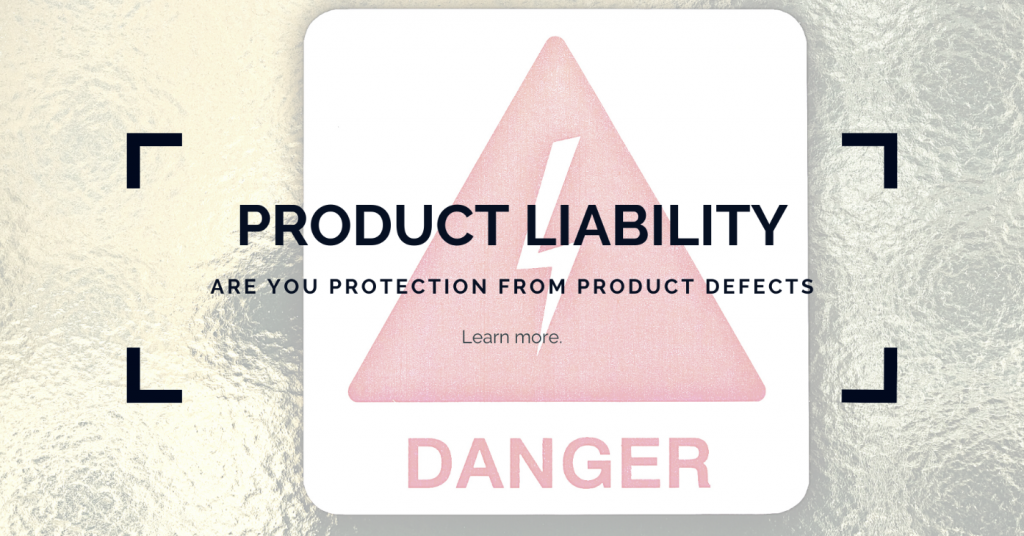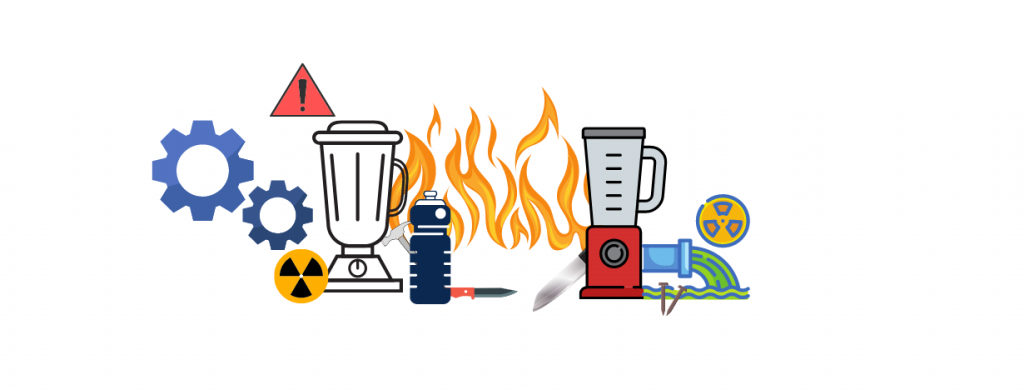Product Liability
CAPTION PLACED HERE
PRACTICE AREAS


Motor Vehicle Accident
Our client stopped at the stop sign and was hit by another vehicle causing brain injuries
Our client stopped at the stop sign and was hit by another vehicle causing brain injuries
Free Case Evaluation
Contact Us now

Product Liability
Holding Companies Responsible for Defective Products
If you have been injured by a dangerously defective consumer product, then you are not alone. Tens of thousands of Americans are injured in this manner each year.
Companies that make products cannot just spin them out without any concern for the safety or well-being of their consumers. They have a duty to make products that are safe if used as intended, and if they fail to uphold this duty, they can be held legally liable.
Our firm can help victims of defective consumer products seek restitution for their injuries.
Commonly Defective Products
There are all sorts of defective consumer products, and there is no exhaustive list. Just about any product can be dangerously defective, even perfectly innocuous-looking things that you’d never imagine would any risk.
Some of the most common dangerously defective products include:
- Medical devices. These include implants, replacements, pharmaceutical drugs, and surgical devices. Because of their nature, even a minor defect in a medical device may have serious consequences.
- Toys and other children’s products, such as cribs and playpens. Here, too, a defect can lead to uniquely horrific consequences.
- Sporting goods, such as helmets, exercise machines, and weights.
- Food. All sorts of foods can sicken you, and not just animal products, either: some of the worst cases of food poisoning have come from fruits and vegetables.
- Manufacturing and safety equipment. For employees who make a living doing industrial work, the consequences of an equipment defect can cause long-lasting harm to one’s life and career.
Automobiles and automobile parts. Many parts of an automobile can be dangerously defective, including the acceleration and braking system, seat belts and other safety features, and the tires.

Can I Sue for Product Liability?
If you were injured by a product that you purchased, then you have standing to sue. But the original buyers of the product are not the only ones who can sue.
Some victims of defective products feel discouraged from suing, because they incorrectly believe that only the buyer can sue. In California, however, people who did not buy a product, but who were injured by it, can still sue. This includes not only people who were using the product, but also bystanders who were not using the product but who happened to be injured by it.
After all, it would hardly be fair to only allow the original purchaser to sue. If someone makes a defective car, and the driver of that car crashes into you because of the defect, you are just as deserving of financial compensation as you would be if you had bought the car.
Who Can I Sue for Product Liability?
That depends on the nature of defect.
Regardless of what type of product it is, there are three major ways a product can be defective:
- If a product has a design defect, then there is some inherent flaw in the original engineering of the product. One example of this might be a piece of furniture that was carelessly designed so as to have a risk of collapsing.
- If a product has a manufacturing defect, then there is some flaw in how the product was put together, even if the original design was perfect. Going by the above example, imagine a piece of furniture that was put together carelessly at the factory so that it was likely to collapse.
- If a product has a labeling defect, then the makers failed to warn consumers of a specific danger associated with the product. This might be a piece of furniture that did not warn about a risk of collapsing under certain circumstances.
The type of defect has an impact on who we will sue. At any point along the supply chain, if someone went wrong, then we can hold them accountable. Sometimes we can hold multiple parties responsible for the incident, if the defect occurred on more than one level.
Part of our task as your attorneys, therefore, is to investigate and figure out who dropped the ball.
Strict Liability: Why Product Liability Cases Are Easier
Product liability cases are relatively easy to try, at least compared to other types of personal injury cases. This is because many of them can be pursued under the legal theory of strict liability.
The common standard in most types of personal injury cases is negligence. This means that you would need to show that the defendant breached a specific duty.
Strict liability is completely different. You will not have to prove that the defendant – the designer, manufacturer, distributor, or other party responsible for the product defect – was negligent.
You will simply need to prove that:
- The defendant you are suing designed, put together, or sold the product in question.
- The product had some design flaw that made it unreasonably dangerous if used properly.
- You used the product safely and cautiously, in the manner in which it was intended.
- The defect in the product caused you some particular harm.
Remember, even if the defendant was not negligent at any point, they can still be held accountable.
Types of Damages
As your attorneys, we will sue for you to recover damages, or monetary compensation for your injuries.
There are several types of damages, and the amount and type of damages you will be able to recover depend on how precisely you were injured as well as the severity of your injuries.
Our job is to fight for you and help you recover the maximum amount possible, standing up against defendants’ attorneys who will try to diminish and dismiss your injuries.
The first main category of damages involves economic damages. This is all the stuff with a direct price tag, including:
- Medical bills from any direct medical costs you incurred, ranging from initial emergency treatment and follow-up visits to medicines and rehabilitation, as well as costs for permanent disability if the injuries are lifelong.
- Property damage for any personal affects of yours that were damaged or destroyed. This tends to be rarer in product liability cases, but it can sometimes be a factor.
- Lost income for any time you were forced to take off work, and reduced earning capacity for any income you are likely to lose in the future.
The second main category of damages involves noneconomic damages. This is the stuff which doesn’t have a direct price tag to it but which is still meaningful and quantifiable, including:
- Pain and suffering, for the ways in which these injuries negatively affected your quality of life.
- Emotional distress, for the ways in which the injuries harmed you psychologically.
- Loss of consortium or loss of society, if the injuries affected your physical or emotional relationship with your spouse or other loved one.
- Disfigurement, if there was any long-term or permanent harm done to one’s physical appearance.
The final category of damages involves punitive damages. These are not directly tied to any injuries and are specifically intended to hold the defendant accountable for their wrongs. These are awarded when the defendant has acted maliciously or fraudulently. They will not be a factor in most routine cases but they can factor into cases where something particularly outrageous has occurred.
Gathering Evidence in a Product Liability Case
As your attorneys, it is our job to fight for you, and the ease with which we can do this depends on the strength of the evidence that you can provide us. Evidence is a make-or-break matter in a product liability case, and the stronger it is, the more likelihood you have of a favorable outcome.
Here are some of the main things you should go to gather evidence:
- Keep the defective product. Some companies will encourage you to send the product back in exchange for a refund or a free replacement. Never fall for this! You will be giving away the cornerstone of your case. Keep the product and do not tamper with it.
- Take pictures of your injuries, if you are in any condition to do so after an accident. If not, then have someone else do it for you. You should also take some pictures of the defective product itself.
- Record witnesses. If anyone witnessed the injury occur, then their testimony can prove invaluable later. If the witnesses are strangers, then get their contact information at the scene, if you can. Their testimony can back you up and even provide details that you – in the heat of the moment – may have missed.
- See a doctor. If your injuries are bad enough, you will likely end up at the emergency room, but even if they are not, see a doctor as soon as possible, preferably the same day. This will provide us with a paper trail to prove to a jury that you were in fact injured.
- Keep medical records. For all follow-up visits with the doctor, keep thorough records of all your expenses, including medications, physical therapy, and any other treatments that might factor in.
- Keep records of the ways in which the injury impacted your life. If you were forced to miss a vacation because of your injuries, for instance, then you should take down a note of this. It will provide us with a basis by which to calculate noneconomic damages later.
Remember, paper is your friend in all this!
We Will Fight for You
If you were injured by a defective product, then waste no time in calling us today. The earlier we start working on your case, the better our chances of obtaining a favorable outcome for you will be.
We will be happy to take your call and schedule a free consultation, where we can talk over our options with you. Once you have retained our services, we will fight for you every step of the way, using every measure we can to hold the defective product maker, designer, or distributor accountable and getting you the justice that you deserve.
find out if you have a case

Helpful Information
The Personal Injury process can be confusing. To answer the many questions regarding accidents and the injuries they produce, we put together the most frequently asked accident questions along with helpful guides to accompany them. Whether it be questions on cost, medical expenses and treatments or specifics in what to do ( or not do), we have you covered.
find the best medical providers
Having high quality care to get our clients recover is our main priority. That is why we focus on sending our clients only to the best physicians after being involved in an accident.
Chiropractic
Family Doctors
General Practitioners
Neurologist
Spinal Surgeons
Cardiologist
Orthopedics
Pain Management
MRI
Optometrist
Pediatrics
- Chiropractic
- Family Doctors
- General Practitioners
- Neurologist
- Spinal Surgeons
- Cardiologist
- Orthopedics
- Pain Management
- MRI
- Optometrist
- Pediatrics

Overall Best Rated In Physical Therapy

Highest Quality Rating In Neurology

Client Preferred In Chiropractic
- WE GET RESULTS
- WE'RE AVAILABLE 24/7 FOR YOU
- NO FEES UNLESS YOU WIN






Our client stopped at the stop sign and was hit by another vehicle causing brain injuries